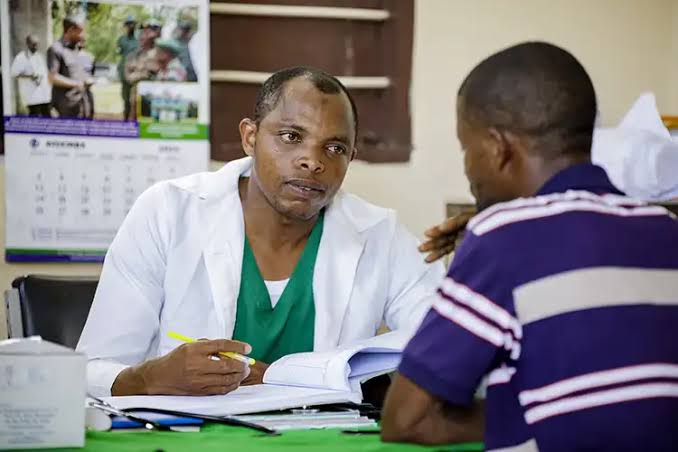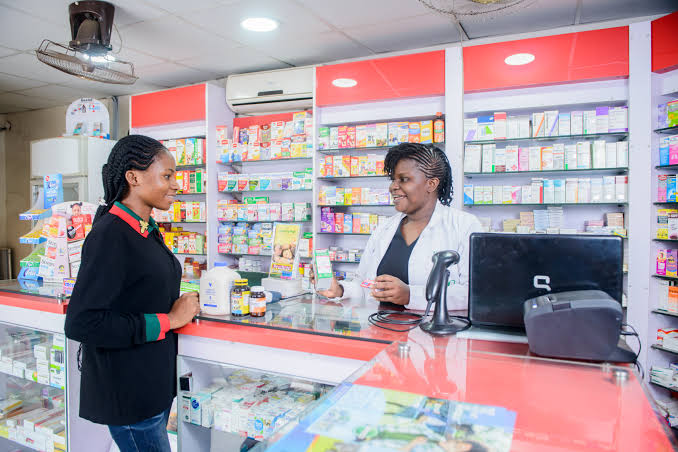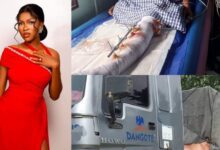
Antimicrobial Resistance (AMR) often referred to as ‘silent pandemic’ occurs when microorganisms such as bacteria, fungi, viruses and parasites develop mechanisms to resist the effects of antimicrobial drugs, making them ineffective.
This resistance can lead to infections that are difficult or impossible to treat, resulting in increased morbidity, mortality, and healthcare costs.
AMR can occur naturally, but the misuse and overuse of antimicrobial medications, such as antibiotics, have accelerated the development of resistance.
Nigeria is number 19 of 204 countries with the highest age-standardised mortality rate per 100,000 population associated with AMR.
In 2019, there were 64,500 deaths attributable to AMR and 263,400 deaths associated with AMR, making the number of AMR deaths in Nigeria higher than those from enteric infections, respiratory infections and tuberculosis, maternal and neonatal disorders, neglected tropical diseases and malaria, and cardiovascular diseases.
However, this is likely underestimated considering the gaps that exist in national AMR surveillance.
In addition to the impact on mortality, loss of gross domestic product (GDP) attributable to AMR, developing countries like Nigeria has been forecast to reach 5 – 7% by 2050.
Misuse Of Antibiotics, Poor Hygiene, sanitation, others fueling the AMR pandemic
Experts inform that, even though the effectiveness of antimicrobials were designed to reduce overtime, certain factors were speeding up the process:
Overprescription and misuse of antibiotics
It is a common practice in Nigeria to prescribe antibiotics for viral infections, such as the common cold or flu, against which they are ineffective.
Similarly, prescribing broad-spectrum antibiotics, which target a wide range of bacteria, can contribute to the development of resistance.
Also, prolonged antibiotic treatment can increase the risk of resistance development.
Poor hygiene and sanitation
Poor hygiene and sanitation play a significant role in the development and spread of Antimicrobial Resistance (AMR). Failure to wash hands regularly, especially in healthcare settings, can spread resistant bacteria.
Similarly, poor sterilization and disinfection of medical equipment and other infection prevention and control practices can spread resistant bacteria. Also, poor wound care practices can lead to the spread of resistant bacteria.
Other poor sanitation practices such as inadequate waste management, contaminated water sources and inadequate sewage systems can lead to the spread of resistant bacteria.
Farmers’ Ignorance
Often overlooked, one of the major contributors of AMR is from the food we eat. It is not uncommon to find poultry farmers giving antibiotics to their chicks to prevent diseases, others give them to their fish, cattle, broilers e.t.c to enhance growth. These unwholesome practices make the animals carriers of antimicrobial resistant organisms which gets transferred to humans when consumed.
Antibiotics are used to treat sick animals, but improper use, such as underdosing or overdosing, can contribute to the development of resistance.
What WHO Says
The World Health Organization (WHO) considers Antimicrobial Resistance (AMR) one of the top global public health and development threats. According to WHO, AMR was directly responsible for 1.27 million global deaths in 2019 and contributed to 4.95 million deaths.
The Organization emphasized that the misuse and overuse of antimicrobials in humans, animals, and plants were the main drivers of AMR.
WHO also notes that AMR affects countries in all regions and at all income levels, with low- and middle-income countries being the most affected.
To tackle this, they developed a Global Action Plan (GAP) on Antimicrobial Resistance to address AMR globally. The plan includes five strategic objectives:
– Improve awareness and understanding of AMR
– Strengthen knowledge through surveillance and research
– Reduce the incidence of infection
– Optimize the use of antimicrobial medicines and
– Develop the economic case for sustainable investment in AMR.
Additionally, WHO launched the Global Antimicrobial Resistance and Use Surveillance System (GLASS) to track AMR trends and inform strategies at all levels.
The Global Health Body also warns that if we don’t take action now to address AMR, 4.1 million people across Africa could be dead by 2050.
What Nigerian Government Is Doing
The Nigerian government is taking significant steps to combat Antimicrobial Resistance (AMR). In October 2024, the government launched the Second National Action Plan on Antimicrobial Resistance (NAP 2.0), which outlines strategies for improving antimicrobial stewardship, enhancing surveillance and detection capabilities, promoting research and development, and strengthening healthcare systems.
The NAP 2.0 plan is a revision of the initial national action plan adopted in 2017, which had a 44% completion rate.
Aware of the threat posed by AMR, the World Health Assembly (WHA) approved the Global Action Plan on Antimicrobial Resistance (GAP) in 2015. Among its aims was the requirement that all Member States had National Action Plans (NAPs) that were in line with GAP’s goals by 2017.
Nigeria was one of the 100 countries that prepared a NAP by the end of March 2018. Nigeria’s first NAP for AMR was a five-year plan (2017–2022) outlining goals drawn from examining the strengths, weaknesses, risks, and opportunities of the national AMR situation to mitigate the crisis.
Since the introduction of the NAP on AMR, Nigeria has made strides in addressing AMR in several arenas. For example, in education, AMR was introduced in core curricula in some pre-and in-service training and other continuing professional development for human health workers.
Numerous Nigerian schools have adopted and implemented core curricula for undergraduate and graduate veterinarians as well as veterinary paraprofessionals to guarantee coverage of AMR and sensible antimicrobial usage in tertiary education and training programs as well.
The new plan addresses the gaps and challenges identified in the initial plan, including weak involvement from sectors such as environment, plant, food, aquaculture, agriculture, and relevant human health sectors.
The government has also collaborated with international partners, such as the World Health Organization (WHO), to develop and implement the NAP 2.0 plan.
Additionally, Nigeria has received funding from the Fleming Fund to support the development and implementation of its national action plan on AMR. The Fleming Fund is a UK aid program that supports low- and middle-income countries to generate, share, and use data to improve antimicrobial use and encourage investment in AMR.
Just like NAP 1.0, NAP 2.0 would run for 5years. Its features include: Adopting a One-Health approach that recognizes the interconnectedness of human, animal, and environmental health, and promotes collaboration across sectors.
Leveraging digital technologies, such as artificial intelligence, data analytics, and mobile health, to enhance surveillance, monitoring, and evaluation.
Engaging communities in the development and implementation of NAP 2.0, and promoting ownership and accountability.
Encouraging private sector engagement and investment in AMR prevention and control, and promoting public-private partnerships.
Some of the goals Of NAP 2.0 are to reduce the incidence of AMR in Nigeria by 50% by 2025, Strengthen regulatory frameworks and enforcement mechanisms to prevent the misuse and overuse of antibiotics.
Additionally, to promote responsible use of antibiotics in human and animal health, and reduce antibiotic misuse and overuse.
Unregulated Dispensing Of Drugs In Patent and Proprietary Medicine Vendors (PPMVs)
In Nigeria, community pharmacists and patent and proprietary medicine vendors (PPMVs) are the first point of care for many individuals in their communities.
With some of them given the title “doctor”
It is not uncommon to see antimicrobials like flagyl, ciproflaxin, ampiclux e.t.c being purchased over the counter
Can be purchased over the counter in patent drugstores and open markets across the country, you can walk into even big pharmacies across the country and ask for these drugs without a doctor’s prescription. This should not be so. A Nigerian who recently relocated to the United Kingdom was shocked to learn about the threat of Antimicrobial resistance.

“No wonder it is hard to get antibiotics here. You need a doctor’s prescription to get it and they don’t like to prescribe it. It baffles me because amoxil is quite easy to get in Nigeria without any hassle”, she said.
This should be the practice. The Pharmacists Council of Nigeria (PCN) is a regulatory body responsible for the regulation of pharmacy practice and the pharmaceutical industry in Nigeria.
They are saddled with the responsibility of Licensing of Pharmacies and pharmaceutical premises to ensure compliance with regulatory standards.
They also register pharmacists and pharmaceutical technicians to ensure they meet the required qualifications and standards.
Their tasks include conducting regular inspections of pharmacies to ensure compliance with regulatory standards. It also includes monitoring pharmaceutical products in the market to ensure they meet regulatory standards.
Additionally, they are expected to take disciplinary action against pharmacists and pharmaceutical premises that fail to comply with regulatory standards.
However, in recent times the body has been lagging behind in its regulatory functions as PPMVs are consistently infiltrated with fake drugs and continue to make prescription (something outside the purview of their jurisdiction) instead of referral to the hospital for proper diagnosis, they hold consultation sessions and make even make prescription with the view to “help” or cash out at the expense of the masses.
In most cases, it is after several trial and error they advise patients to go for professional help, sometimes, too late.
Insufficient Funding, Government Commitment Fueling the Pandemic
The successful execution of Nigeria’s AMR NAP 2.0 will rely heavily on the availability of sufficient and
sustainable resources – human, infrastructural, and financial.
The AMR NAP 2.0 was costed using the
WHO Costing and Budgeting Tool for AMR National Action Plans and the indicative cost to implement Nigeria’s five-year AMR NAP 2.0 operational plan is ₦62,262,379,066.00 (USD 77,633,889.00).
This amount is to be used to improve antimicrobial resistance (AMR) awareness, education,
understanding, and behaviour change among all relevant stakeholders, Improve implementation of infection prevention and control (IPC) programmes, biosecurity, and vaccination uptake including access to WASH across the One Health sectors among others.
Although the One Health Sectors involve the Federal Ministry of Health, Environment, Agriculture and their relevant agency, only the Nigeria Center for Disease Control and Prevention (NCDC) has a budget for AMR, thereby slowing down the progress of the policy.
Low coverage and services of the National Health Insurance Act (NHIA) is another limiting factor. Most of the country’s population pay out of pocket for medical treatment, this in turn affect the services they can afford and they resort to whatever can make them well, irrespective of consequences.
All Hands Must Be On Deck
The consequences of AMR are severe and far-reaching, including increased risk of infections and deaths, prolonged illnesses and hospital stays, higher healthcare costs and threats to modern medicine, including organ transplants and cancer treatment.
AMR does not affect a targeted group of people, it’s a concern to both the rich, poor, young, old and diverse religion.
For example, the rich who have access to the best medical treatment can still develop Antimicrobial Resistance from the food they consume.
Seeing that no one is spared from this ‘silent pandemic’, let us all contribute our quota by making the necessary changes and enlightening those around us.






